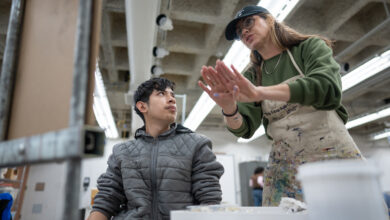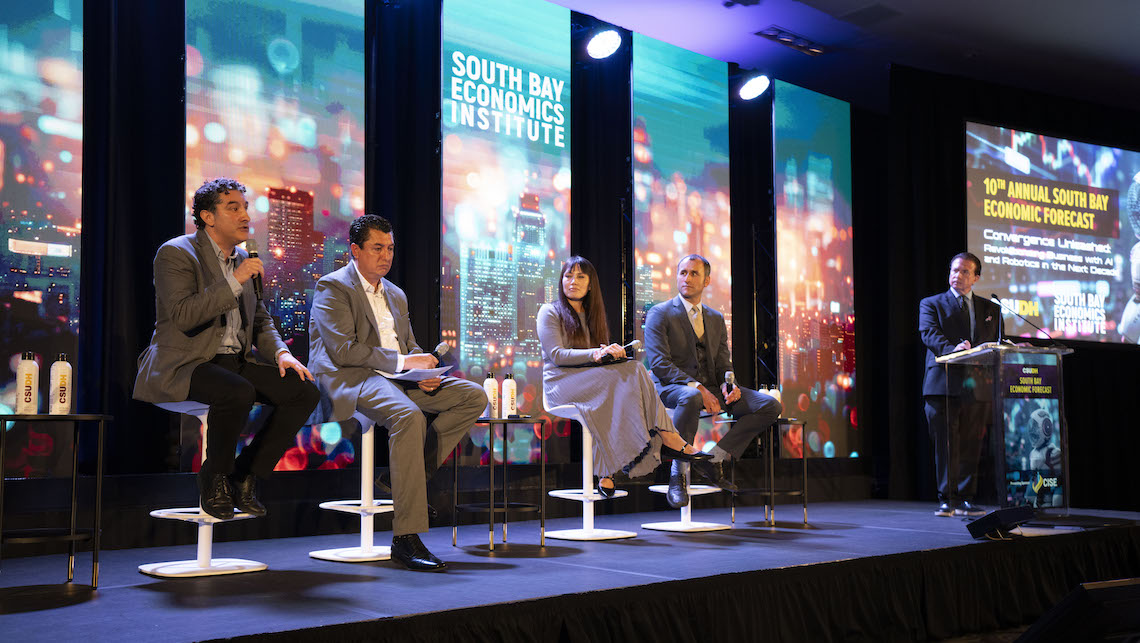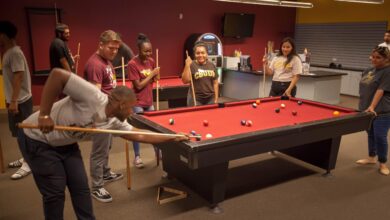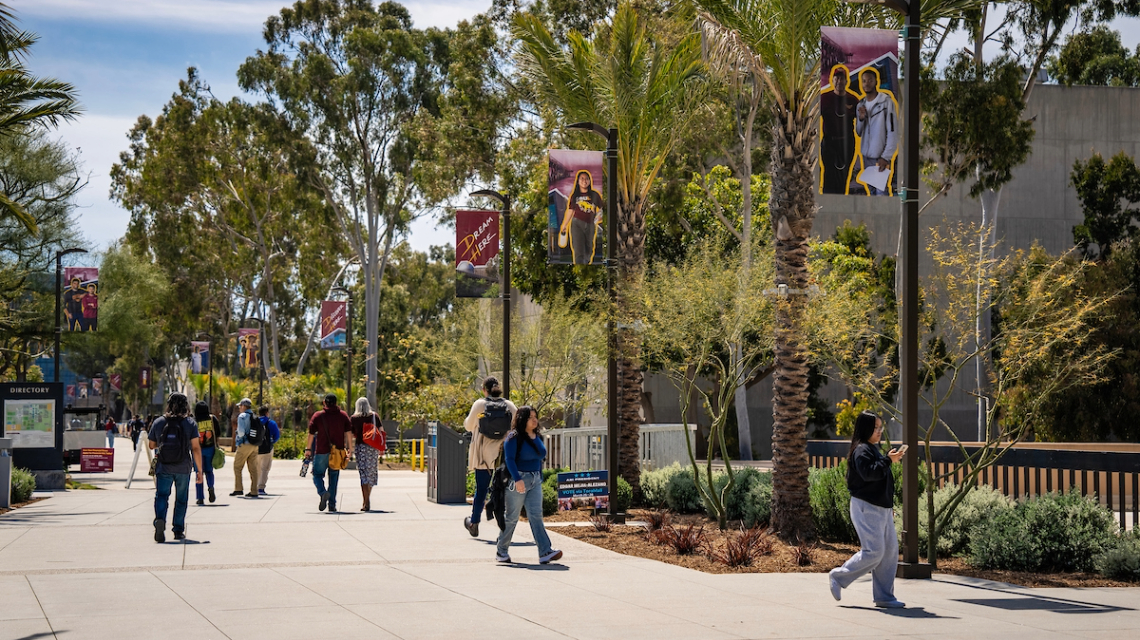 Though COVID-19 continues to upend many aspects of life – not least the economy – the South Bay region can expect continued economic growth and stability in the near-term future.
Though COVID-19 continues to upend many aspects of life – not least the economy – the South Bay region can expect continued economic growth and stability in the near-term future.
That was just one of several positive predictions economists made at yesterday’s 7th annual South Bay Economic Forecast, a conference where more than 200 business leaders, innovators, and city officials convened at CSUDH to discuss the economic state of the South Bay region.
Titled “Looking into the Future: New Trends and Opportunities,” the conference was moderated by Frank Mottek, host of Mottek on Money on 790 KABC. The event began with the South Bay Economic Panel, comprised of CSUDH faculty who also produced the Economic Forecast & Industry Outlook Report: Assistant Professor of Finance Jennifer Brodmann, Associate Professor of Public Administration Fynnwin Prager, and Professor of Economics Jose Martinez.
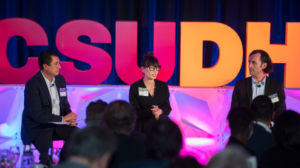
On the economic recovery, Prager said: “We had a lot of excitement earlier in the year, with a prediction of 7 percent growth, and then Delta (COVID-19 variant) came along. The forecast dampened slightly, but we’ve seen growth unlike any other year. It’s a real mixed picture.”
The report predicted positive macroeconomic trends for the U.S., with a forecasted GDP growth of 4-6 percent and unemployment falling to 4 percent in 2022.
Regarding inflation, the panel posited that prices and sales will mostly stabilize by mid-2022. However, they warned that supply issues, particularly around electronics containing microchips, will continue leading up the holidays. Though current logjams in the supply chain are causing the shortages, the panel pointed out that California’s ports, including the ports of Los Angeles and Long Beach, are faring better than others.
“Obviously things look bad when you see all the ships lined up, but the ports are actually moving far more cargo through there than ever before,” Prager said. “When comparing California to other states, the ports came out very well.”
Though employment for the South Bay is still down, the economists pointed out that the number of business applications in L.A. County doubled during the pandemic – and that despite business closures, the overall number of businesses is a net positive.
Martinez had cautious optimism, saying “California in general is doing really well, and is still a good place to do business. We believe good things are to come.”
Following the economic portion of the program, experts in technology and aerospace took the stage for the “Looking into the Future” panel, where they discussed the latest advancements in business models, innovations in rocket-to-space delivery, and the South Bay’s longtime status as an aerospace hub.
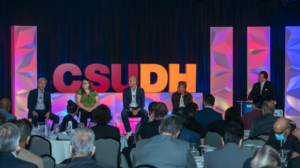
Panelists included: Josh Brost of Relativity Space; Dansil Green, engagements lead for SpaceWERX, the commercial innovation office for U.S. Space Force; Mouse McCoy of Studio MSD; and California Assemblymember Al Muratsuchi.
View more photos from the Economic Forecast event here.
The panel discussed how exciting developments such as the increased use of automation, 3D printing, and digitization are flattening many of the longtime barriers to access in aerospace. Furthermore, many of these innovations are coming out of the South Bay – making it a magnet for talent, industry, and investment.
Assemblymember Muratsuchi, who is chair of the Select Committee Aerospace & Joint Legislative Climate Change, emphasized that the South Bay’s strengths can and should be used to tackle the other major issues of the future.
“Climate change is going to be the number one national security issue, causing tremendous disruption within and among nations,” Muratsuchi said. “We are attracting innovators from around the world to build their businesses here, and none more so than the aerospace industry. We need to continue that innovation spirit in California and apply it to the fight against climate change.”
Muratsuchi added that the talent in California brings in the most venture capital out of any state in the U.S. – and that the CSU plays a major part in supplying that talent.
“We need to make sure we continue to invest in our CSU, the number one producer of the engineering workforce in California,” he said. This is the backbone of our workforce. We have to make sure we prioritize public higher education.”
Watch the full forecast event below:

